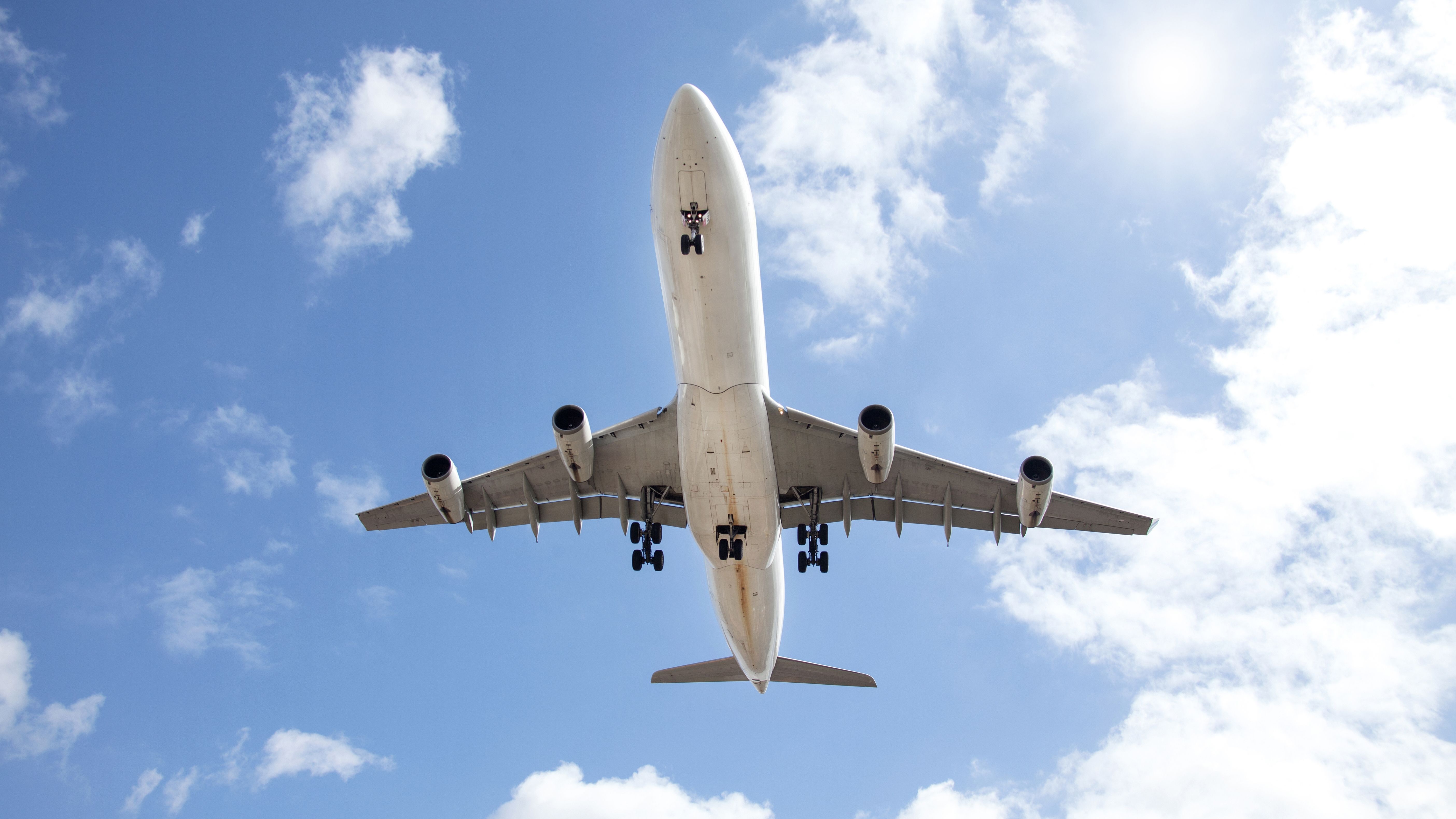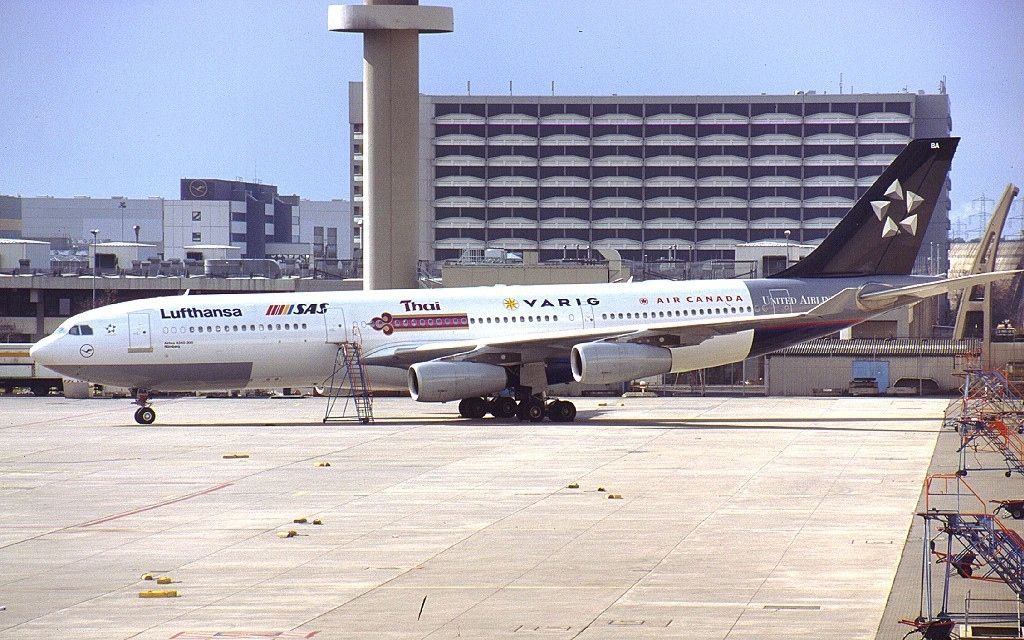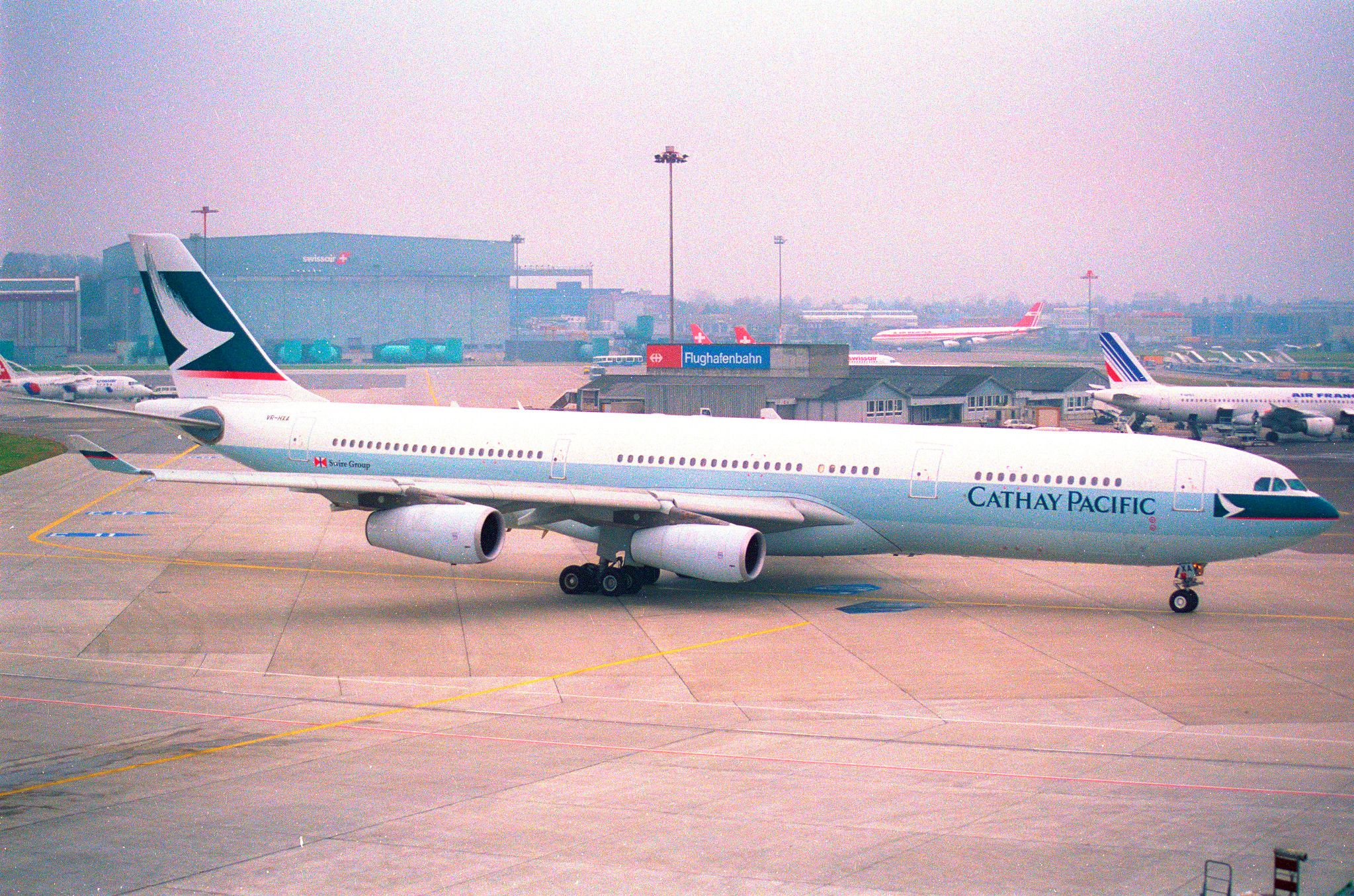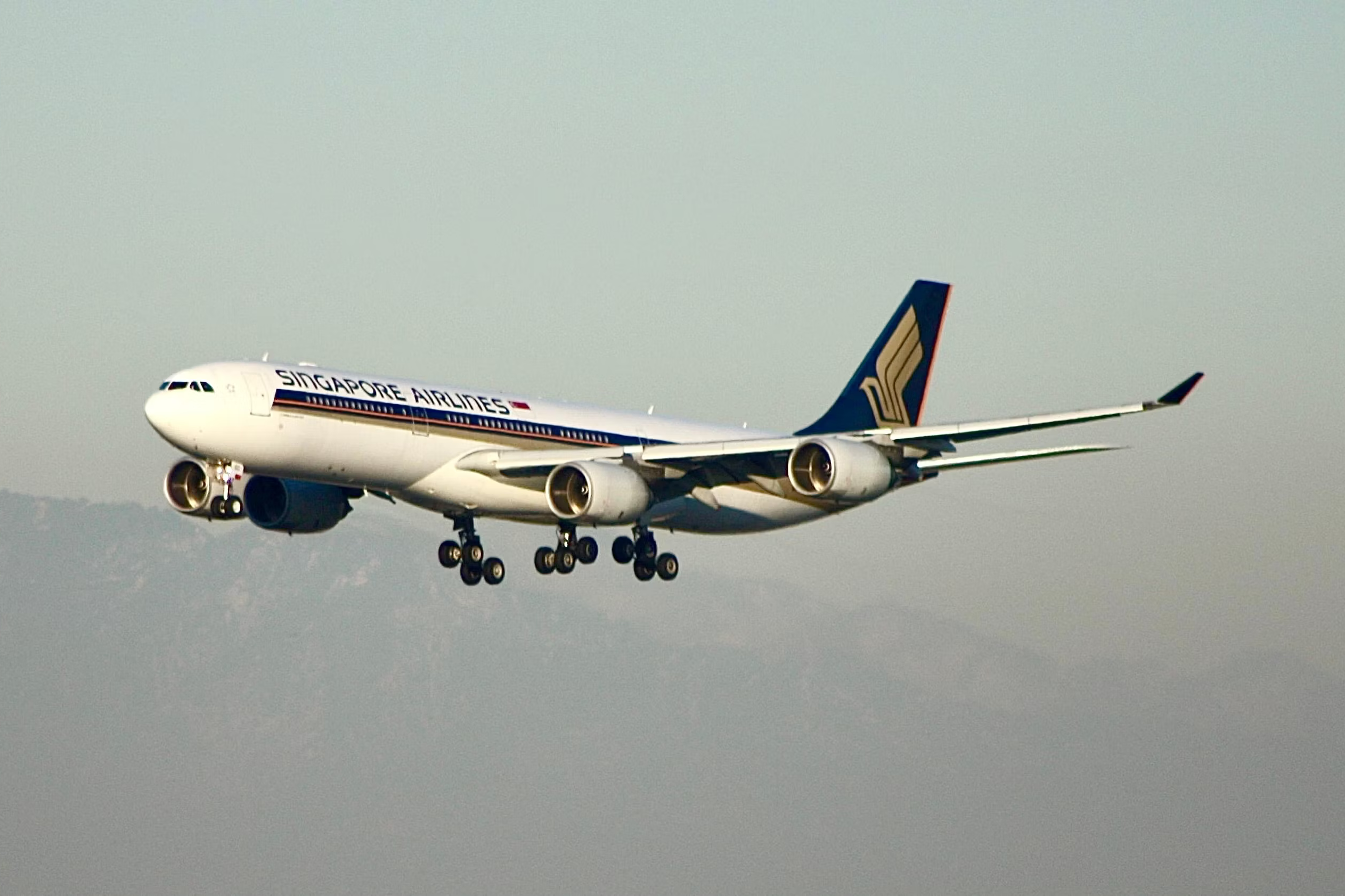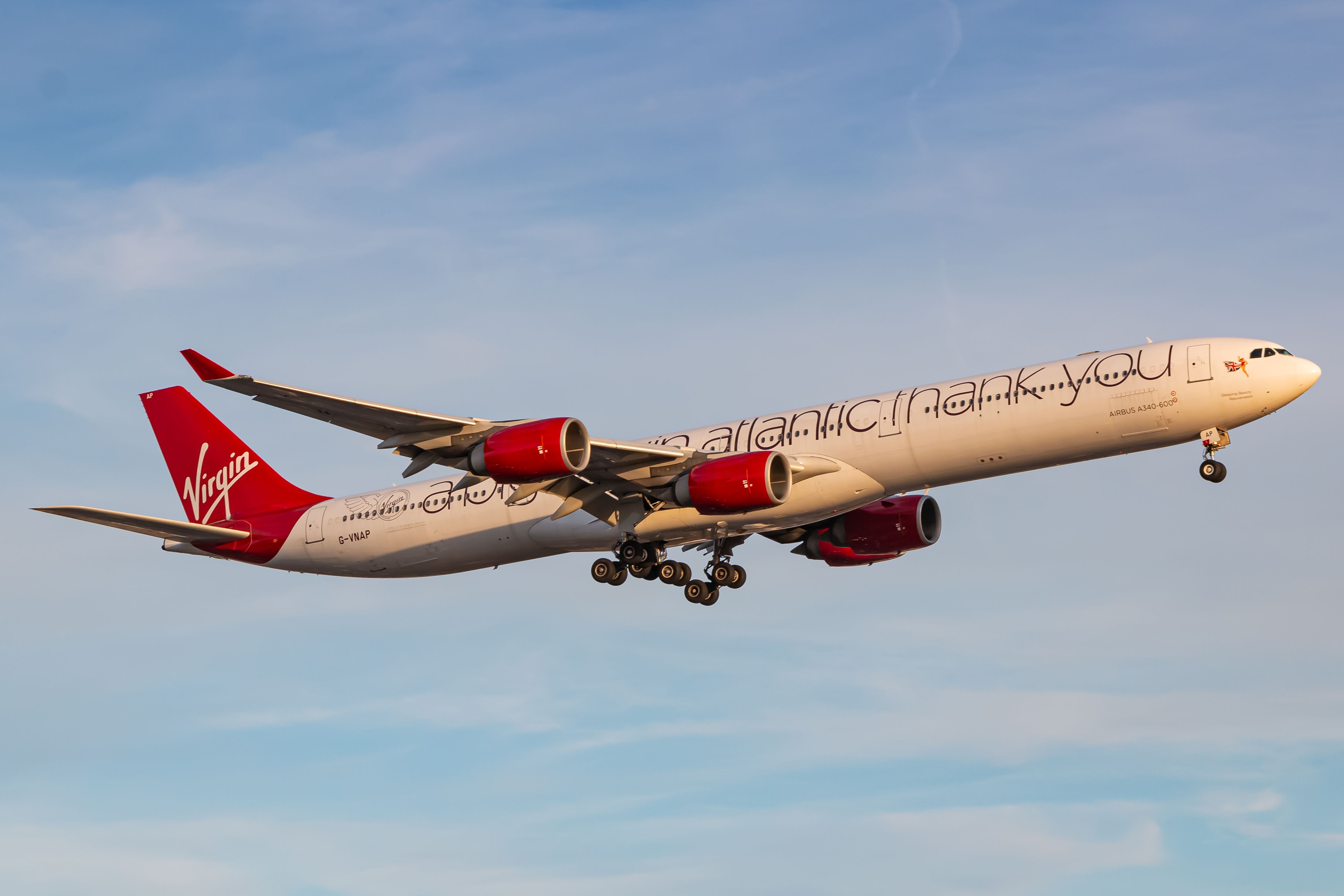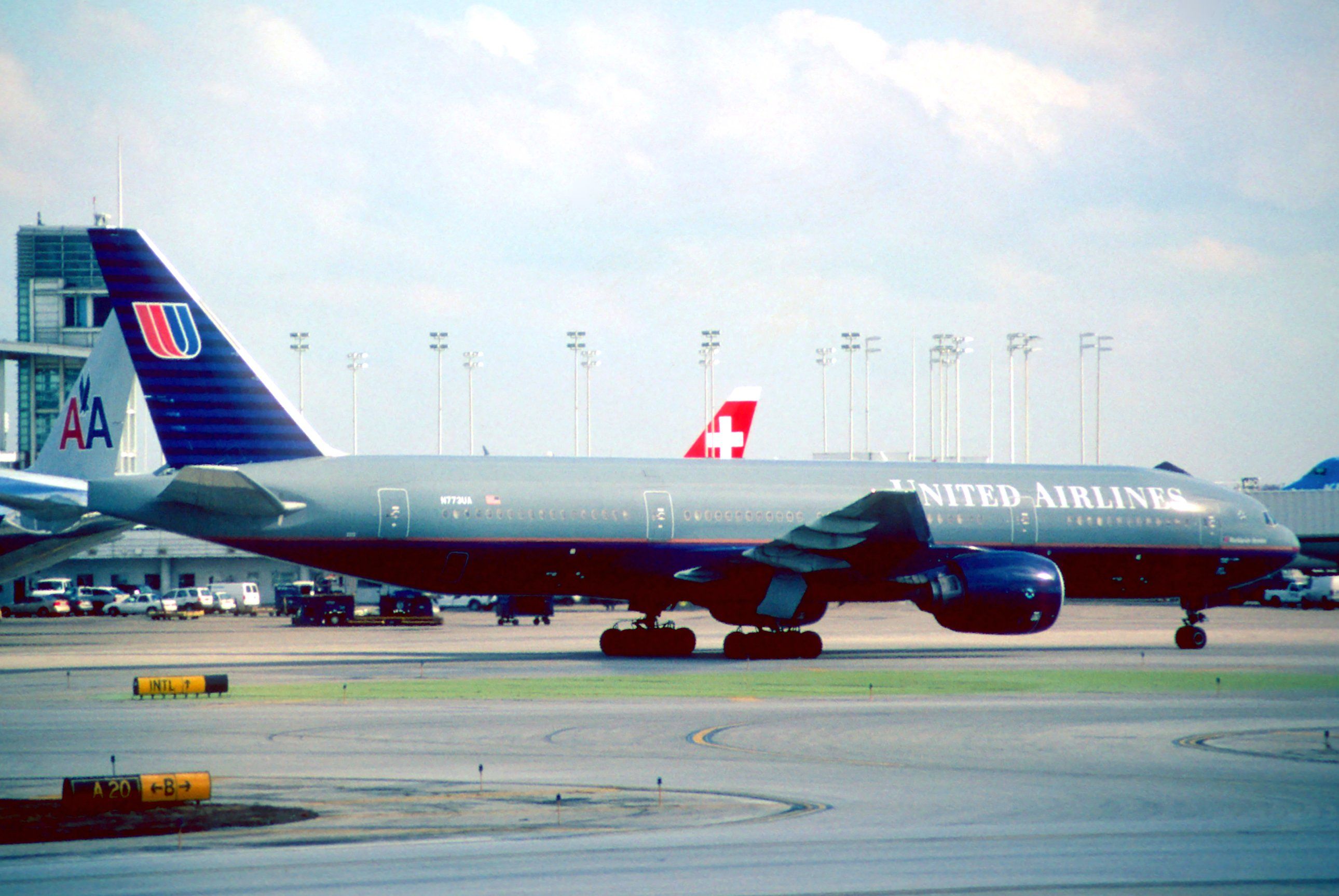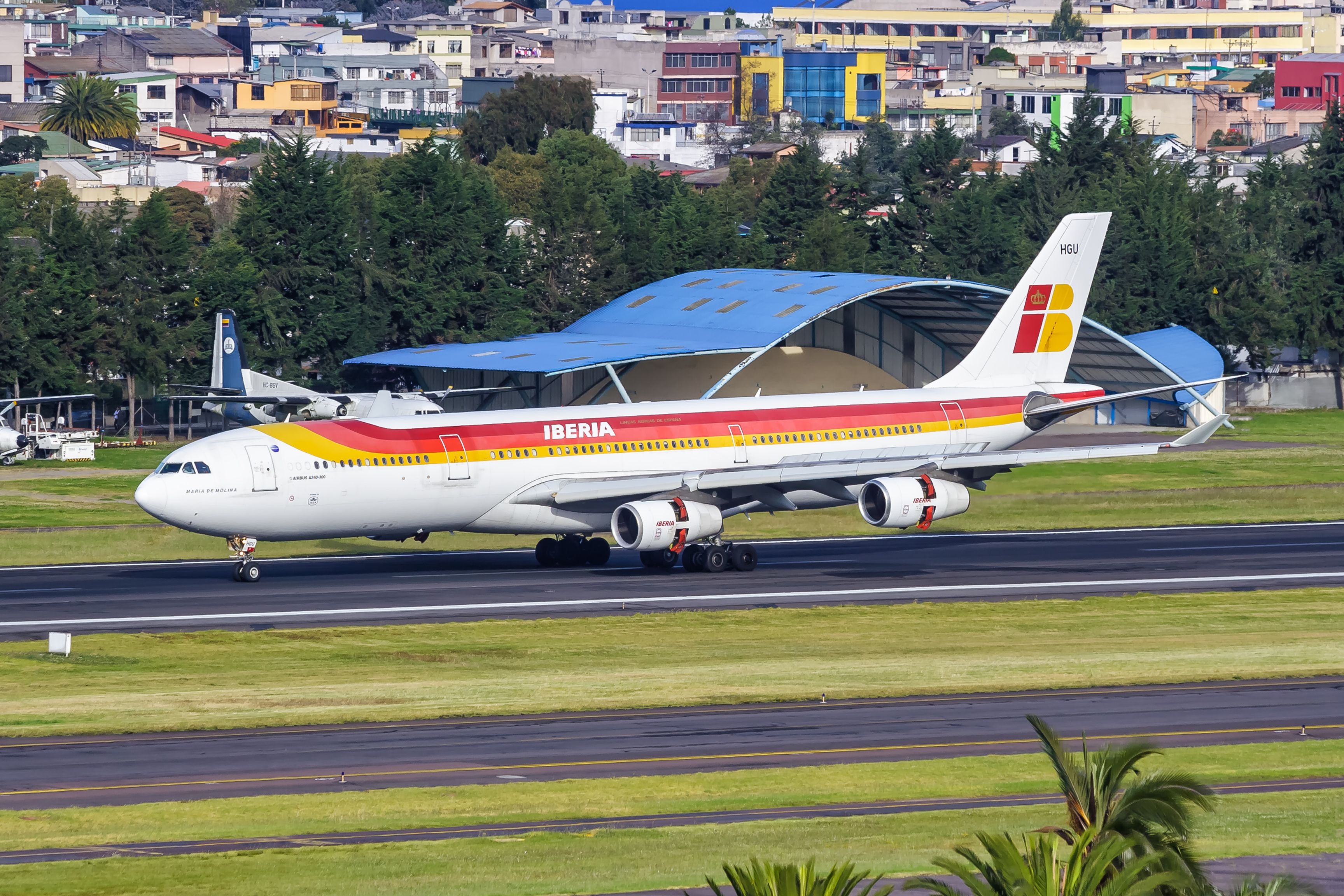The Airbus A340 fills a unique niche in the Airbus catalog. It is larger than an A300, has a greater range than an A330, and can fly almost anywhere thanks to four engines. However, in recent years, the A340 has become obsolete and is quickly fading into history. Why did Airbus build the A340 family? And why did the plane cease production?
The story starts with the Airbus A320
Airbus always planned to build a range of aircraft, from small narrowbodies to four-engined behemoths, to rival US builders like Boeing. But the journey from an idea to creation is different for each aircraft. For the A340, it begins where we left off with the Airbus A320.
In a previous article, we discussed how Airbus came to create the A320. One of the forks in the road for the A320 was that Lufthansa and other European airlines wanted a four-engined rival to the Boeing 747. In contrast, American customers wanted a competitor to the Boeing 737. Now that the Boeing 737 rival was well on its way to market, Airbus could go back and re-examine the four-engined long-range proposal.
When talking to airlines in the marketplace in the early 1980s, Airbus discovered that opinion was split on the number of engines on the new widebody. The ideal new aircraft would be able to:
- Carry more than 200 passengers
- Fly over oceans like the Pacific
- Have range to link distant regions, such as Asia to Europe
While other builders may have struck down one path over another, as Airbus had previously with the A320, this time, they decided to make a compromise. The aircraft builder would build one airframe and split it over two different models with different engine configurations. A twin-engined medium-haul carrier called the TA9 and a long-haul version called the TA11 (T standing for twin-aisle).
Airbus predicted that sharing technologies, cost, and fuselage design would speed up the process and save around $500 million (over $1.5 billion today).
Finalizing the design
From here, Airbus worked hard designing its two new aircraft models. They came up with the following specifications:
- TA9 would have a range of 6,100 kilometers (3,300 nautical miles)
- TA11 would have a range of up to 12,650 kilometers (6,830 nautical miles)
They also doubled down on sharing technology amongst the entire Airbus product line, taking the fly-by-wire technology in development for the A320 and using it in this product line. But some technology didn't make it into the design. Airbus trialed a select type of wing called the variable camber wing. It would change shape depending on the phase and altitude of the flight. This would reduce fuel burning by around 2%, but in the end, Airbus didn't believe it was worth the development cost.
Finally, in 1986, Airbus was confident to move forward into production with the two aircraft. Allegedly, Airbus originally wanted to call the TA11 the A330 and the smaller aircraft the A340, but airlines didn't understand why the A340, with a four in its name, didn't have four engines. Airbus swapped the names around, and the rest is history.
Bringing the A340 to market
Airbus opened the A330 and A340 for orders in 1987 and initially had ten airlines order over 130 aircraft. Eighty-nine of these orders were exclusively for the A340, showing that Airbus was right on the money about the aircraft's demand in the marketplace.
The new plane got a big boost in orders from the failure of a rival. In the latter half of 1987, McDonnell Douglas discovered that its MD-11 could not meet the demands of its client, Singapore Airlines. The flag carrier wanted an aircraft that could fly directly from Singapore to Paris in the winter against the wind, a scenario that the MD-11 could not do.
Thus, Singapore canceled its twenty aircraft order and switched to the A340, throwing its confidence behind the model. In 1991, the first A340 took to the skies, and in 1993, Airbus delivered the first A340 to Lufthansa (the original German airline that wanted a quadjet from Airbus).
The Airbus A340 would set world records later that year, flying from Paris to New Zealand and back in two days with only a five-hour stopover to refuel. This was the first direct flight between Europe and New Zealand and the world's longest flight until beaten in 1997. However, the A340's reign at the top would last less than a decade.
Discover more aviation news with Simple Flying.
Boeing creates an A340 killer
In the late 90s, Boeing brought to the market the Boeing 777. This aircraft had all the advantages of the A340 when it came to the range and passenger size, but was not as heavy and only used two engines.
Airbus responded by developing a stretched version of the A340 that could seat more and fly further. But this bigger aircraft burned more fuel and cost more to operate.
But the real killer was the removal of ocean limitations of twinjet aircraft. Thanks to the creation of ETOPS, the Boeing 777's economics made more sense for airlines, and sales of the A340 collapsed. By 2005, 144 Boeing 777s were ordered compared to only 15 Airbus A340s, and it seemed the plane's fate was set.
On 10 November 2011, Airbus announced the end of the A340 program, only twenty years after the design first took flight. Plans for an A340neo rolled into the new A350 program, and Airbus put effort behind the new A380 (which would last an even shorter amount of time).
The A340 today
Before the pandemic hit, there were an estimated 220-230 Airbus A340s in service with airlines worldwide. However, by the summer of 2023, this had dwindled to less than 100 - notable remaining operators of the quadjet include Lufthansa, which still flies with 27 of its aging A340 fleet. The oldest A340 still in service today is a 31-year-old A340-300 flying for Iranian carrier Aseman Airlines.
The A340 was undoubtedly a useful aircraft and Airbus' first attempt at taking on the market of the Boeing 747. It was also the last medium-sized quadjet built before manufacturers developed more efficient two-engined aircraft. Its passing ushered in the age of twinjet aircraft like the A350 and Boeing 777.
What do you think of the Airbus A340? Have you ever flown on an A340? Let us know your stories in the comments.

